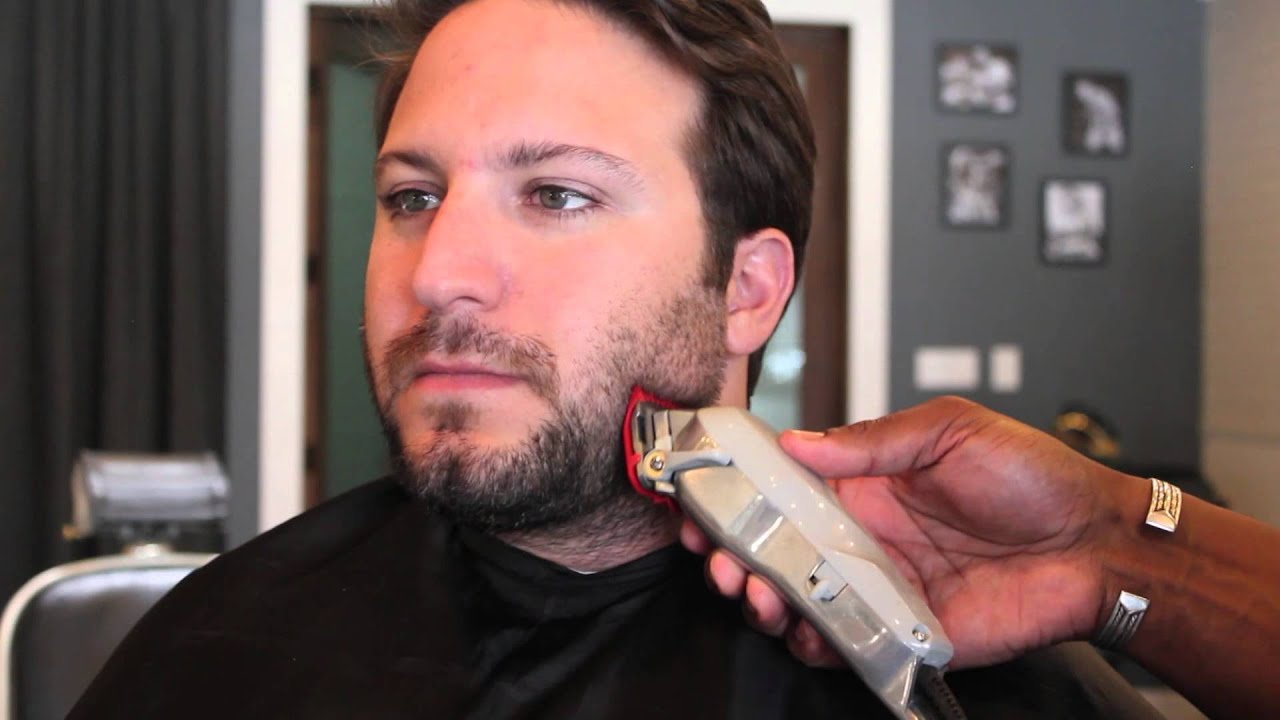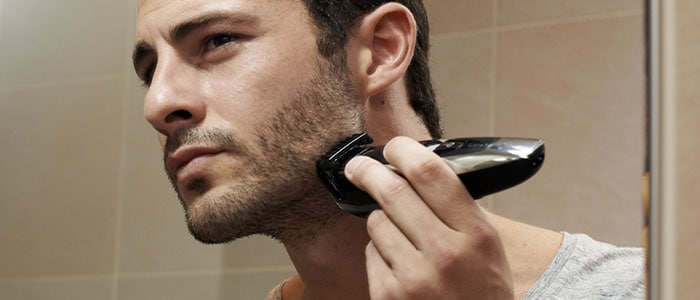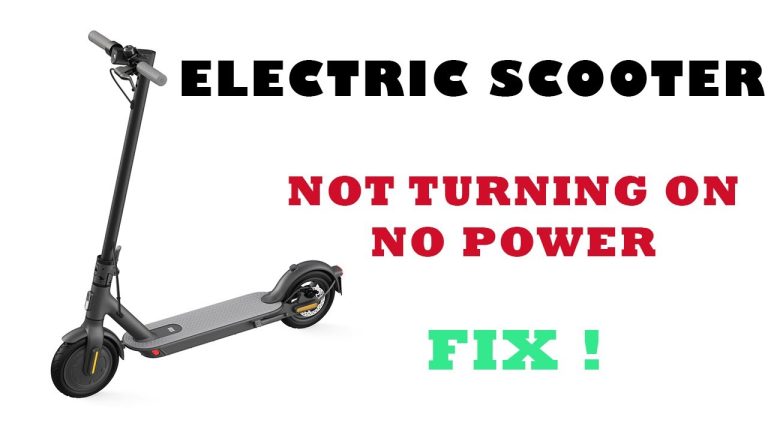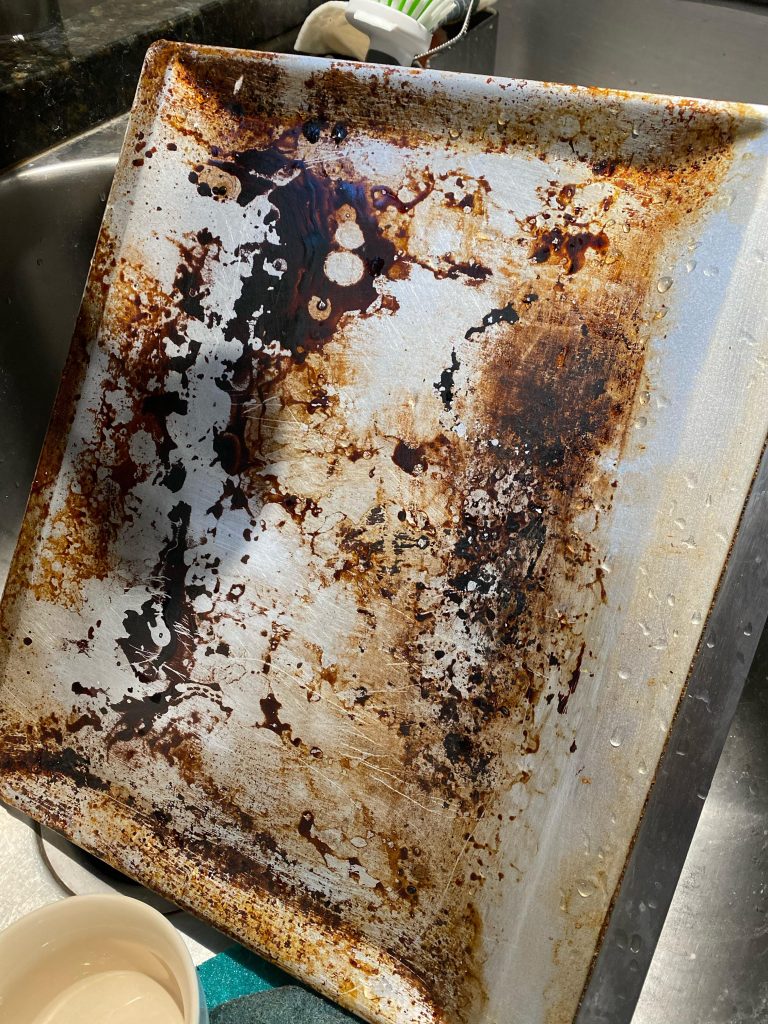How to Use Beard Trimmer | A Complete Guide

To use a beard trimmer, start by cleaning your beard and combing out any tangles. Next, set the trimmer to your desired length and gently move it against the direction of hair growth, using short, even strokes.
Understanding Your Beard Trimmer
Types of Beard Trimmers Available
When it comes to choosing the right beard trimmer, it’s important to understand the different types that are available. There are two main types of beard trimmers: corded and cordless.
Corded beard trimmers are powered by electricity and need to be plugged into an outlet while in use. These trimmers provide a consistent and reliable power source, making them a great option for those who want a trimmer with no battery constraints. They are often preferred by professionals and individuals who prefer a longer grooming session.
Cordless beard trimmers, on the other hand, are powered by rechargeable batteries. These trimmers offer more freedom of movement and are portable. They are perfect for those who are always on the go or for quick touch-ups when traveling. It’s essential to note that cordless trimmers will require charging after prolonged use.
Features and Accessories to Look For
When choosing a beard trimmer, there are several features and accessories that you should consider to ensure you get the best grooming experience possible.
One important feature to look for is an adjustable length setting. This allows you to customize the length of your beard, giving you the flexibility to achieve your desired style.
Some trimmers also come with a built-in vacuum system to collect the trimmed hair, minimizing mess and making the cleanup process much easier. This feature is especially useful for those who prefer a clean and tidy grooming area.
Other accessories that you may find beneficial include different comb attachments for precise trimming, a blade guard for protection, and a cleaning brush to help maintain the trimmer’s functionality.
Choosing the Right Trimmer for Your Needs
When choosing a beard trimmer, it’s essential to consider your specific needs and preferences. Here are some factors to keep in mind:
- The length and thickness of your beard: Different trimmers are designed to handle various hair types, so it’s essential to find one that can accommodate your specific needs.
- Budget: Consider your budget and find a trimmer that offers the features you need without breaking the bank.
- Brand reputation: Opt for a trimmer from a reputable brand known for producing quality grooming products.
By considering these factors, you’ll be able to select a beard trimmer that suits your requirements and helps you achieve the perfect look.
Preparing Your Beard For Trimming
Before you start shaping your beard with a trimmer, it’s important to properly prepare it. By following a few simple steps, you can ensure that your beard is clean, untangled, and ready for the perfect trim. In this section, we’ll guide you through the process of washing and drying your beard, brushing and combing it, and trimming any long stray hairs.
Washing and Drying Your Beard
To begin, it’s crucial to wash your beard thoroughly. Use a gentle beard shampoo or a mild soap to remove any dirt, oil, or product buildup. Massage the shampoo into your beard, ensuring that it reaches the skin beneath. Rinse well to ensure no residue is left behind.
Once your beard is clean, gently pat it dry with a soft towel. Avoid rubbing vigorously, as this can cause frizz and damage the hair. If you prefer to use a blow dryer, set it to the lowest heat setting and use a wide-toothed comb to gently guide the airflow through your beard while drying.
Brushing and Combing Your Beard
Next, give your beard a good brushing to untangle any knots or snags. Start from the bottom and work your way up, using a boar bristle brush or a wide-toothed comb. This will help distribute natural oils, promote hair growth, and make it easier to achieve an even trim.
Once your beard is untangled, take a comb and comb it in the direction you want it to lay. This will help train your beard hair and give it a neater appearance. If you prefer a more styled look, you can apply a small amount of beard oil or balm at this stage to add shine and control.
Trimming Long Stray Hairs
Now that your beard is clean and well-groomed, it’s time to trim any long stray hairs that may be affecting the overall shape. Use a pair of sharp scissors or a precision trimmer to carefully snip off any noticeable longer strands. Take your time and follow the natural shape of your beard to avoid any uneven cuts.
If you have a longer beard with a defined neckline, you can also take this opportunity to clean up the area around the neckline. Use a trimmer with a guard or a beard shaping tool to create a clean and well-defined line.
Remember, less is often more when it comes to trimming your beard. It’s better to take off a little at a time and make gradual adjustments until you achieve your desired look.
By following these simple steps to prepare your beard for trimming, you’ll create the perfect canvas for shaping and maintaining your facial hair. With a clean, untangled, and trimmed beard, you’ll be ready to confidently sport the style you desire.
Trimming Techniques For Different Beard Styles
When it comes to maintaining a well-groomed and stylish beard, using a beard trimmer is essential. Whether you prefer a stubble beard, short beard, or a medium to long beard, knowing the right trimming techniques is crucial. In this article, we will guide you on achieving the perfect length for a stubble beard, maintaining an even trim for a short beard, and shaping and defining your beard for a medium to long beard style. We will also cover the important aspects of neckline and cheek line trimming to help you achieve a well-defined and well-maintained beard.
Stubble beard: Achieving the perfect length
A stubble beard exudes a rugged and effortlessly cool look. To achieve the perfect length for a stubble beard, follow these simple steps:
- Start by using a shorter guard or setting on your beard trimmer. This will allow you to trim your beard to the desired length without going too short.
- Trim your entire beard using an upward motion, going against the direction of hair growth. This will help in achieving an even length and avoiding any patchy areas.
- Pay extra attention to the mustache area, as it tends to grow faster than the rest of the beard. Trim it to match the length of the rest of your beard for a cohesive look.
- Once you have achieved the desired length, use a comb or brush to gently neaten your stubble beard and remove any loose hairs.
Short beard: Maintaining an even trim
A short beard adds a touch of sophistication and maturity to your appearance. To maintain an even trim for a short beard, follow these steps:
- Start by choosing the appropriate guard or setting on your beard trimmer. For a short beard, a longer setting than the stubble beard length is recommended.
- Trim your beard in the direction of hair growth to maintain a uniform length. Use light, gentle strokes to ensure an even trim.
- Pay attention to the jawline and neck area, as these areas tend to grow faster and require more frequent trimming. Define the neckline by trimming any stray hairs below the natural beard line.
- Regularly comb or brush your short beard to keep it looking tidy and well-groomed.
Medium to long beard: Shaping and defining your beard
A medium to long beard allows for more versatility and experimentation. To shape and define your beard, follow these steps:
- Start by using a longer guard or setting on your beard trimmer to maintain the desired length.
- Trim your beard in the direction of hair growth, using longer strokes to maintain a consistent length and shape. Be sure to trim any split ends or damaged hair to promote healthier growth.
- To create defined lines and angles, use a precision trimmer or a smaller guard attachment. Pay close attention to the cheek line, jawline, and neckline to achieve a clean and well-defined look.
- Regularly brush or comb your medium to long beard to remove any tangles or knots, and apply beard oil or balm to keep it soft, hydrated, and well-nourished.
Neckline and cheek line trimming
The neckline and cheek line are often overlooked but are crucial in achieving a polished and well-maintained beard. Follow these steps to trim your neckline and cheek line:
- Identify your natural neckline by tilting your head back slightly. The natural neckline is where the neck meets the underside of your jaw.
- Use a precise trimmer or a smaller guard attachment to create a clean, curved line. Avoid trimming too high or too low, as this can affect the overall shape of your beard.
- When trimming the cheek line, look for the natural growth pattern. Shave or trim any stray or uneven hairs above the cheek line for a more defined and symmetrical look.
- Regularly check and maintain the neckline and cheek line to keep your beard looking sharp and well-defined.
By following these trimming techniques, you can effortlessly maintain and style your beard to perfection. Remember to regularly clean and maintain your beard trimmer for optimal performance and durability. Experiment with different styles and lengths to find the beard that best suits your personality and enhances your overall appearance.

Credit: www.usa.philips.com
Tips For A Smooth And Efficient Trimming Experience
Tips for a Smooth and Efficient Trimming Experience
When it comes to grooming your beard, using a beard trimmer can make the process quick and easy. However, to achieve a smooth and efficient trimming experience, there are a few tips and tricks that you should keep in mind. By following these guidelines, you can ensure that your beard is well-maintained and always looks its best.
Trimming against the grain vs. with the grain
One of the first decisions you’ll need to make when using a beard trimmer is whether to trim against the grain or with the grain. Trimming with the grain involves following the natural direction of your hair growth, while trimming against the grain involves trimming in the opposite direction.
Trimming with the grain can help create a more natural look and is often recommended for beginners or those with sensitive skin. On the other hand, trimming against the grain can result in a closer shave and a more polished appearance.
Avoiding common mistakes and pitfalls
When using a beard trimmer, it’s important to avoid common mistakes that can lead to an uneven or unkempt beard. One common mistake is trimming too much off at once. It’s better to start with a longer setting and gradually trim more if needed. Another mistake to avoid is pressing too hard with the trimmer, as this can cause irritation and uneven cutting. Finally, make sure to trim in a well-lit area to ensure you can see exactly what you’re doing.
Keeping your trimmer clean and well-maintained
Proper maintenance of your beard trimmer is essential to ensure its longevity and effectiveness. After each use, make sure to remove any excess hair from the trimmer blades using a brush or cloth. It’s also a good idea to oil the blades regularly to keep them sharp and prevent rusting. Additionally, check the manufacturer’s instructions for any specific maintenance recommendations. By keeping your trimmer clean and well-maintained, you can ensure that it continues to deliver a smooth and precise trimming experience.
Using grooming products to enhance your beard
In addition to using a beard trimmer, incorporating grooming products into your routine can help enhance the overall appearance of your beard. Beard oil, for example, can moisturize and condition the hair, making it softer and more manageable. Beard balm or wax can help tame any unruly hairs and add shape and definition to your beard. Experiment with different products to find the ones that work best for you and your beard type.
In conclusion, following these tips can help you achieve a smooth and efficient trimming experience using a beard trimmer. Whether you decide to trim with the grain or against the grain, avoid common mistakes and pitfalls, keep your trimmer clean and well-maintained, or use grooming products to enhance your beard, these guidelines will ensure your beard always looks its best.
Troubleshooting Common Beard Trimming Issues
Dealing with uneven patches or gaps
Uneven patches or gaps in a beard can be frustrating, but they are a common issue when it comes to trimming. Fortunately, there are a few techniques you can try to address this problem.
1. Adjust the trimming length: If you notice uneven patches, try adjusting the length setting on your beard trimmer. Gradually increase or decrease the length to even out the overall appearance.
2. Blend the edges: To create a more seamless look, consider using a precision trimmer to blend the edges of the uneven patches. Gently move the trimmer in a circular motion to create a natural transition between the longer and shorter hair.
3. Use a beard oil or balm: Applying a beard oil or balm can help soften your facial hair and make it more manageable. Massage a small amount into the uneven areas to promote hair growth and reduce the appearance of gaps.
Fixing accidental slip-ups or mistakes
Oops! Accidental slip-ups or mistakes happen to the best of us. Here’s how you can rectify them:
1. Trim to a shorter length: If you accidentally trim a section too short, you can try trimming the rest of your beard to match that shorter length. This can help create a more uniform look while waiting for the hair to grow back.
2. Use scissors for precision: If you’ve made a noticeable mistake while using a trimmer, grab a pair of sharp scissors to carefully trim the problematic area. Take your time and use small, controlled snips until you achieve the desired length.
3. Style your beard differently: If all else fails, consider adjusting your beard style to hide any noticeable mistakes. Experiment with different beard shapes or lengths that can draw attention away from the problem areas and accentuate your best features.
Handling ingrown hairs and skin irritation
Ingrown hairs and skin irritation can be uncomfortable and unsightly. Follow these tips to address these issues:
1. Exfoliate regularly: Dead skin cells can clog hair follicles and contribute to ingrown hairs. Exfoliate your skin with a gentle scrub or exfoliating brush at least once a week to remove the buildup and promote smoother hair growth.
2. Use a sharp trimmer blade: Dull blades can tug on hairs, increasing the chances of irritation and ingrown hairs. Make sure to regularly replace the blade on your trimmer to maintain optimal performance.
3. Apply a soothing aftershave or beard oil: After trimming, apply a soothing aftershave or beard oil to moisturize and calm the skin. Look for products that contain ingredients like aloe vera or tea tree oil, which have anti-inflammatory properties.
Growing and maintaining a healthy beard
A healthy beard requires proper care and maintenance. Follow these tips to promote growth and keep your beard looking its best:
1. Eat a balanced diet: A nutritious diet rich in vitamins and minerals can contribute to healthy hair growth. Include foods like lean meats, fruits, vegetables, and whole grains in your diet to support the health of your beard.
2. Regularly groom your beard: Regular grooming helps remove dead skin cells and prevents tangles. Use a beard comb or brush to distribute natural oils evenly and stimulate hair follicles, promoting healthy growth.
3. Trim and shape your beard: Regular trimming helps maintain the shape and health of your beard. Trim any split ends and use a beard trimmer to shape your beard according to your desired style.
4. Keep your beard clean: Regularly wash your beard with a gentle beard shampoo or cleanser to remove dirt, excess oil, and product buildup. Pat it dry with a clean towel or use a hairdryer on a low setting to avoid excessive heat exposure.
By following these troubleshooting tips, you can tackle common beard trimming issues and maintain a healthy, well-groomed beard. Remember, patience is key, and with consistent care and attention, you’ll have a beard that you can be proud of.
Resources For Further Beard Trimming Guidance
Online tutorials and videos
If you’re new to beard trimming or looking to improve your skills, online tutorials and videos can be an invaluable resource. Many experienced barbers and grooming enthusiasts share their expertise on platforms like YouTube and other websites. These tutorials provide step-by-step instructions on how to use a beard trimmer, tips for achieving different beard styles, and techniques to maintain your facial hair.
Watching these videos can give you a visual demonstration of the techniques and tools used in beard trimming. You can learn about proper trimming techniques, how to shape your beard using different attachments, and even how to maintain the hygiene of your trimmer. Make sure to subscribe to channels or websites that regularly upload new content so you can stay updated with the latest trends and techniques in beard trimming.
Beard grooming forums and communities
Engaging with a community of like-minded individuals who share your passion for grooming can provide valuable insights and support. Beard grooming forums and communities are excellent places to connect with experienced individuals who can offer guidance on using a beard trimmer effectively.
In these forums, you can ask questions, seek advice, and learn from the experiences of others. You can find discussions on various topics such as beard care routines, troubleshooting trimming issues, and recommendations for specific trimmers and products. Being an active participant in these communities allows you to grow your knowledge and exchange ideas with fellow grooming enthusiasts.
Recommended beard care products and brands
When it comes to choosing the right beard trimmer, it’s important to make an informed decision. There are a plethora of options available in the market, each with its own features and price range. To narrow down your choices, it’s helpful to rely on recommendations from trusted sources.
Many beard grooming websites and influencers often provide reviews and recommendations for different beard trimmers and brands. These reviews offer valuable insights and help you understand the pros and cons of each product. Additionally, you can find recommendations for other beard care products such as beard oils, balms, and shampoos that complement your grooming routine.
Seeking professional help if needed
While DIY beard trimming can be a rewarding experience, there may be instances where seeking professional help is necessary. If you’re unsure about a specific trimming technique, struggling to achieve a particular style, or encountering problems with your beard growth, a professional barber can provide expert guidance.
A skilled barber can assess your facial hair and offer personalized advice tailored to your unique needs. They can recommend the most suitable trimming techniques based on your face shape, hair texture, and desired style. Seeking professional help ensures that you achieve the best results and maintain the health of your beard.
In conclusion, these resources for further beard trimming guidance provide a wealth of information and support to help you achieve the perfect beard. Online tutorials and videos offer visual demonstrations of techniques, while beard grooming forums and communities connect you with experienced individuals. Recommendations for beard care products and seeking professional help when needed ensure a well-rounded approach to beard trimming.
Frequently Asked Questions On How To Use Beard Trimmer
How Do You Use A Beard Trimmer For The First Time?
To use a beard trimmer for the first time: 1. Clean and dry your beard. 2. Choose the desired length setting. 3. Start trimming against the hair growth direction. 4. Go slow and steady. 5. Use a comb to guide the trimmer for precise shaping.
Do You Trim Up Or Down With A Beard Trimmer?
Use a beard trimmer to trim your beard by moving the trimmer either upward or downward.
What Is The Correct Way To Hold A Beard Trimmer?
Hold a beard trimmer correctly by gripping it firmly but not too tight. Keep your fingers away from the blades, and hold the trimmer parallel to your face. Use short, gentle strokes to trim the beard evenly. Remember to clean the trimmer after each use for optimal performance.
What Are The Different Beard Trimmer Attachments For?
Beard trimmer attachments serve various purposes including trimming different lengths, shaping the beard, defining and edging the neckline, creating precise lines and detailing, and removing unwanted hair from the nose and ears.
Conclusion
To sum it up, mastering the art of using a beard trimmer is essential for maintaining a well-groomed beard that enhances your overall appearance. By following the tips and techniques outlined in this blog post, you can easily achieve the desired style and length for your beard.
Remember to invest in a quality trimmer, maintain cleanliness, trim in the direction of hair growth, and regularly maintain and oil your trimmer for optimal performance. With these guidelines in mind, you’re ready to confidently showcase your impeccable beard style.



